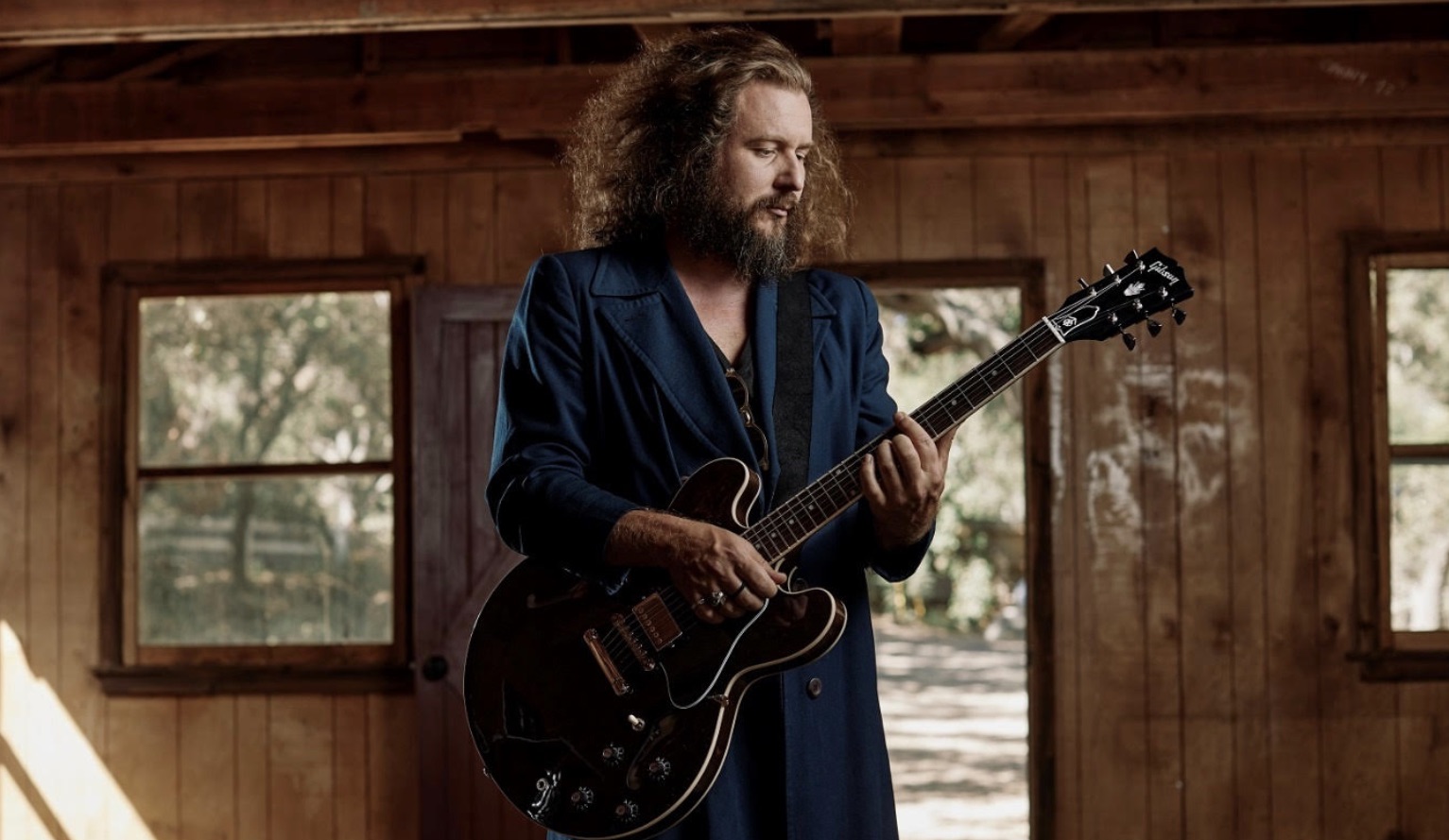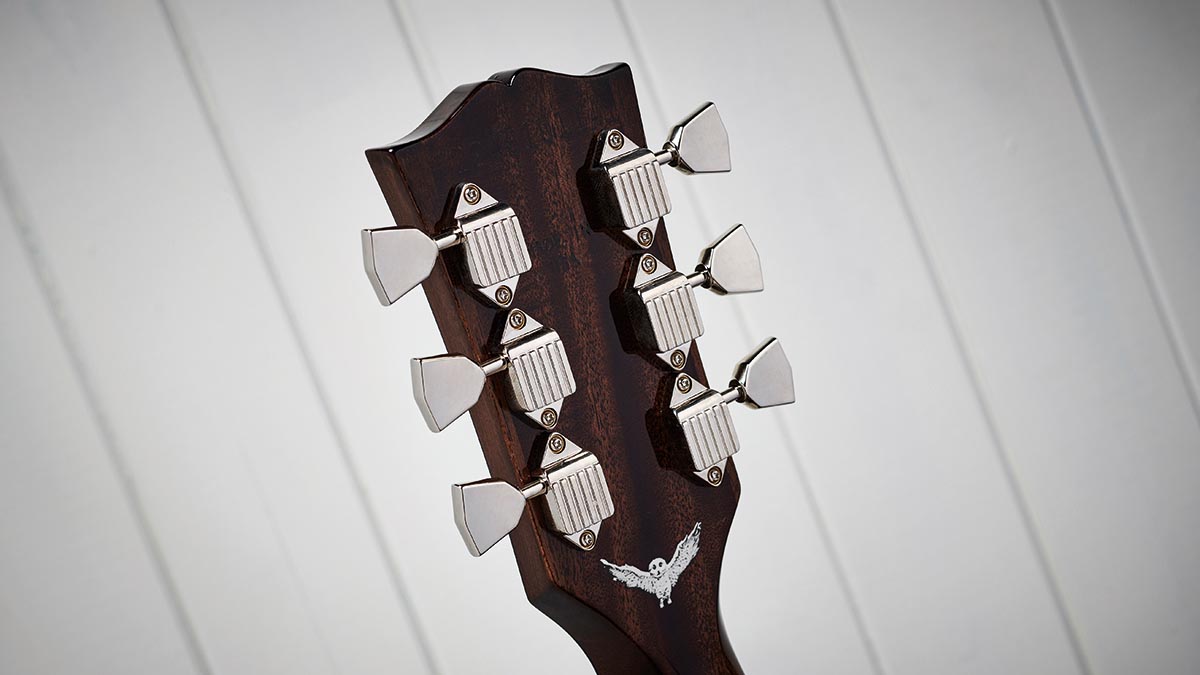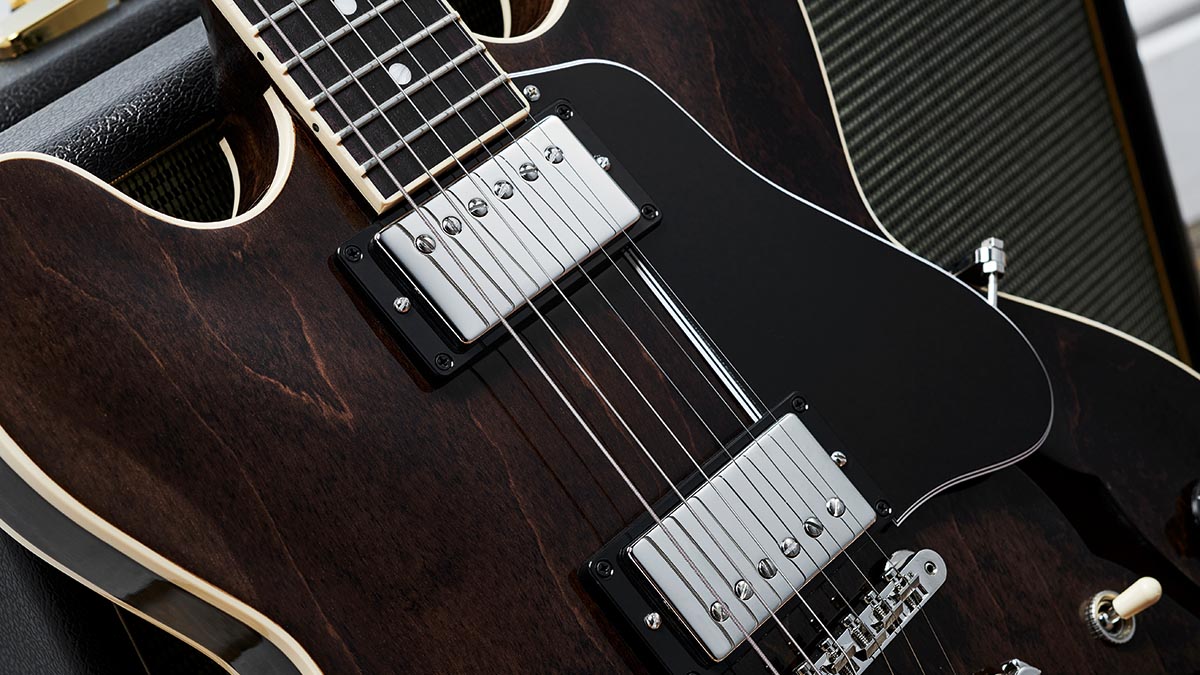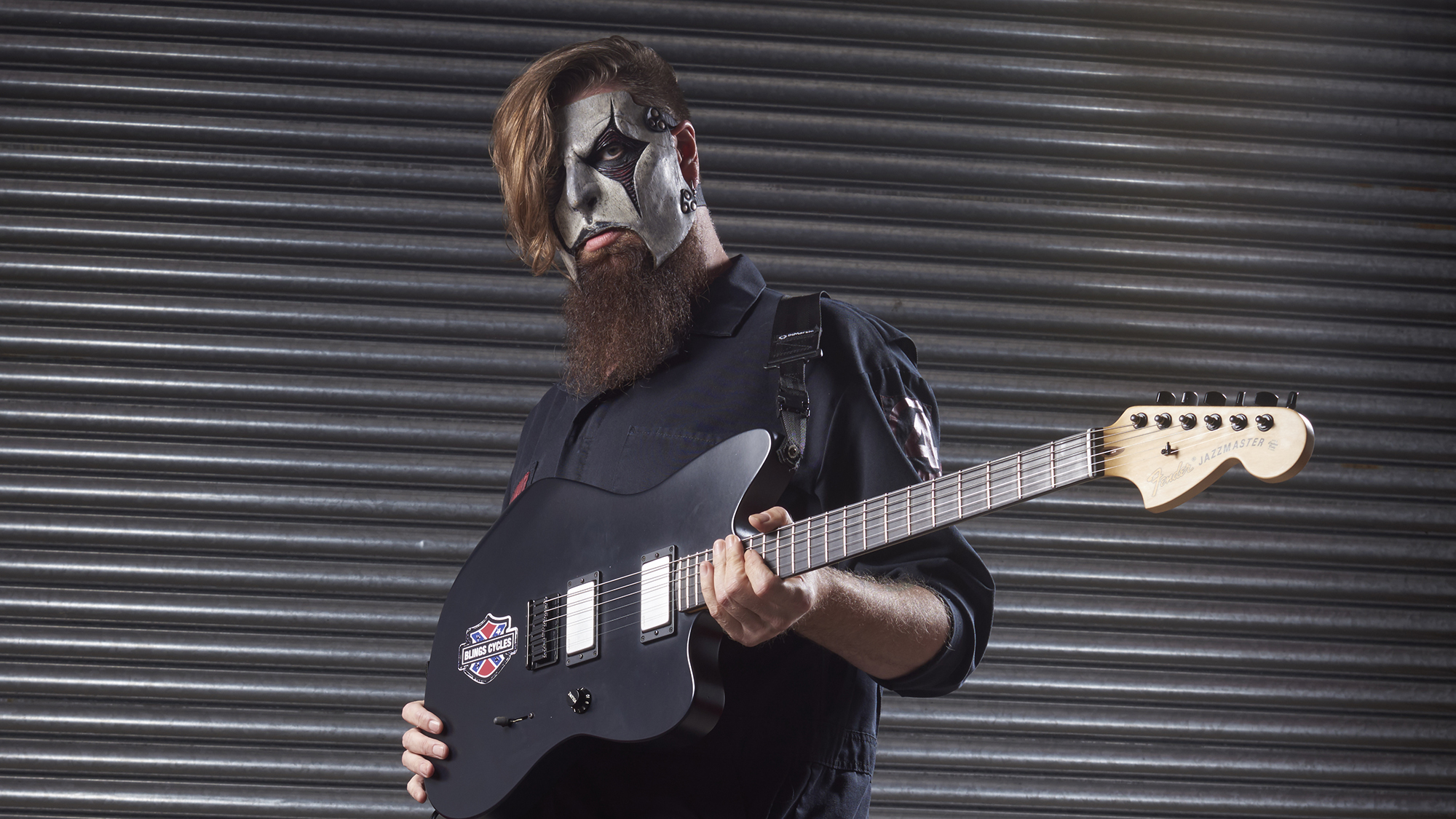Jim James: “I wanted to create a guitar where people could be like, ‘Who the f**k is Jim James? I don’t really care, I just love this guitar!’”
The My Morning Jacket frontman has a new signature Gibson ES-335 that harks back to an under-celebrated era in the model’s history. We join him to discover why it’s a guitar for all seasons

Jim James is the founding member of My Morning Jacket, now 23 years into a psychedelic road trip through the varied sonic terrain of America’s alt-rock scene. Everything from late-era Beach Boys to Bob Dylan and Marc Bolan is referenced in the band’s eclectic sound, which has journeyed a long way over two decades.
A common thread that runs throughout is James’s plaintive vocal and warm, anthemic guitar lines that shimmer behind a mirage of spring reverb. Now, James has been honoured with a signature model ES-335 that caught our interest with its pragmatic, everyman spec and an early ’70s vibe that should appeal to a far wider number of players than James’s fanbase alone.
“We joked about that a lot,” Jim says with disarming frankness. “I wanted to just create a guitar where people could be like, ‘Who the fuck is Jim James? I don’t really care, I just love this guitar.’ Kind of like the Barney Kessel guitar or the Johnny A. one, I just wanted to make a guitar that hopefully felt super-classic, where somebody would just be so stoked when they saw it that it didn’t even matter if they knew who I was or not.”
The practical but classic spec he chose stands every chance of achieving that aim. His signature guitar has a flavour of late-’60s 335s with its walnut finish and witch hat control knobs.
Simple dot inlays continue the low-key vibe, with a calibrated pair of Gibson’s T-Type pickups, a modern take on the T-Top humbuckers used by Gibson from the mid-’60s to the 1980s providing the power.
Indeed, the only unique styling cues that mark the guitar out as a signature model, not a pawn-shop workhorse, are an owl motif on the back of the headstock that’s echoed on the accompanying hardcase. We caught up with Jim to talk about the 335’s central place in his music making and learn why no guitar really passes muster in his music until it proves itself on stage.

When did you first pick up an ES-335?
Get The Pick Newsletter
All the latest guitar news, interviews, lessons, reviews, deals and more, direct to your inbox!
“Gosh, probably about 20 years ago or so. I think I got my first one in maybe 2002 or something like that. So, yeah, probably around 20 years.”
When I got my first ES-335 I had never played another one before, so it was kind of a gamble. I just ordered it and got it and luckily fell in love
Was that a brand-new stock model off the production line?
“Yeah, it was a new one – I got a new one from Gibson. I bought it at a local music store here. I still play it: it’s a Tobacco Burst 335 that I got before we started making our It Still Moves [2003] record. Because I think before that, I only had the Flying V and I wanted something different that had a different resonance and I got that one.”
Were there any musical touchstones or influences that drew you towards the 335?
“You know, it’s funny. I don’t really know exactly… I had seen people play them, obviously, but there was just something in the back of my mind that told me there was something [about the design I would connect with]. I just wanted to open up my sound some more, you know? And I’d had a Gretsch hollowbody before that – a Gretsch Broadkaster.
“And I like that guitar, but it wasn’t quite doing what I wanted it to do, and the Flying V was, like, too much rock ’n’ roll! I was wanting something that was somewhere in the middle, so I just went for it. And ever since it’s been the main type of guitar that I go to first for everything.”

What qualities, in your mind, differentiate an average 335 from a really good one?
“Well, that’s funny because when I got my first one I had never played another one before, so it was kind of a gamble. I just ordered it and got it and luckily fell in love with it. But since then, I know what you mean. I’ve played a lot of them, whether it’s just out of store or at a studio or a friend’s guitar or whatever – and it’s interesting how each guitar resonates uniquely.
For me, it’s the vibrational element. When I hold it, does it have good vibrations coming from it?
“You know, there’s something so unique about every single guitar. Obviously, there’s so much to it: there’s the wood, there’s the neck, there’s the pickups and so on. For me, it’s the vibrational element. When I hold it, does it have good vibrations coming from it? And then, once you start playing it, how much does it cut through the mix or how dull is it? Because it’s wild how some guitars are way too trebly or some don’t give you much power at all.
“The thing I loved about the first one I had was that everything I was looking for in the studio, it could do: it sliced through and gave me a real nice, jangly kind of clean thing, but it still could really, really rock out. And it wasn’t like the Gretsch I had – that was also a hollowbody, but when I would try to really rock with it, it would just go crazy with feedback and take off and stuff. You had to be super-conscious of it. So there was just something about it where I felt like any time I wanted something to happen, it could happen with that guitar.”

What did you ask Gibson for when it came to spec’ing out a signature model for yourself? Was it a ‘greatest hits’ of your favourite features from your previous 335s?
“I talked to Dustin Wainscott [program director for Gibson Made 2 Measure], who designed the guitar with me, and I told him what I was looking for. I have pretty bad carpal tunnel syndrome so I need a thin neck that plays very easily. And that’s the other thing: some 335s, if you pick one up at Guitar Center, or whatever, have kind of a normal neck on them that’s too thick for me.
“I also noticed that Gibson didn’t really have any beautiful walnut-finish guitars any more. They have lots of cool sunburst things or natural things, but I’ve always loved and wished I had a walnut-finish 335. I have a beautiful Tobacco Sunburst 335 and I also had a black 335 and I love both those guitars, too. But I always wished I had a walnut one: there are tons of vintage ones out there.
“So I was talking with Dustin and I wanted to create something that felt like it had been around forever – a really natural‑feeling guitar that was as light as it could be and had a nice slim neck on it.
“So we went back and forth several times and we tried out different pickups, one with P-90s on it and another with a crazy tailpiece on it, and I realised, through all that stuff, that the most important thing to me was I really wanted to make one that I could live and die by on stage. So, for me, that means a 335 with the stopbar tailpiece and the right pickups.
“That’s what I love and that’s what really delivers for me on stage – because playing at home or in the studio is a different thing. You don’t have to be worried about certain things like feedback or loud amplifiers.
“So yeah, we went back and forth several times and also talked about whether or not to make it a 345 or 355. For my part, I also wanted to make it as cost-effective as possible because, even if a 335 is still a pretty expensive guitar for most people, I wanted to make it as beautiful as possible but also as cost-effective as we could.”

What do you want from a set of humbuckers in a 335? Do you like low-wound PAF-style pickups or do you prefer something a bit hotter and fiercer?
“I like them to be somewhere in the middle. I really like the T-type pickups that we settled on. I knew I wouldn’t love this guitar until I was literally on stage with it at a show because there are so many things you can try out at home or in the studio – but I really don’t know [if something will work for me] until I’m on stage with my setup. And when I compared the prototypes of this guitar to the black 335 and the Tobacco 335 I already had, I just realised I didn’t want the pickups to be too aggressive.
When we get into the improv stuff, I love working with the pickup selector and the volume knobs and all that stuff
“As I mentioned earlier, for a minute we thought it would be fun to try out P-90s, but there’s just something about those that didn’t work, either – because I want to be able to get some real nice, clean jangly tones but also be able to get some incredible lead tones, too. So I wanted the pickups to be right in the middle so I could do everything I needed to do.”
Do you like to control gain and tone mostly with pedals or do you prefer using the 335’s quartet of volume and tone controls creatively instead?
“When I’m singing and playing in my shows, I do most of that off the pedals. But when we get into improv stuff, I like to use the volume controls on the 335. And I also love to flip it to the neck pickup and take all the tone out and go for some dark, jazzy tones. So yeah, when we get into the improv stuff, I love working with the pickup selector and the volume knobs and all that stuff. I go between both approaches.”
Fenders and Fender-derived guitars seem to be in fashion with people who use a lot of effects, maybe because of the clarity and dynamic range you get out of single coils. Do you feel that, being humbucker based, the 335 is at a disadvantage to single-coil instruments in effects-heavy scenarios?
“Not at all. I mean, I feel like the 335 really cuts through. There are some things… if I want to go even more rock ’n’ roll, I’ll go for my Flying V that I’ve had for 20 years or an SG or something like that. And I love Strats and I love Teles, too. But for whatever reason, on my musical journey, those are more flavours in the spice rack, as opposed to the main broth of the soup or the main ingredients in the soup.
“Because with single coils, at least for me, I’ve always had problems with radio interference or hum or noise. And sometimes it’s the perfect thing, but most of the time there’s just something about the humbuckers, especially on a 335, because I think it really slices through but then does a lot more, too, that you really can’t get with a single-coil guitar.”

Are there any hidden or underrated tones you can get out of a 335 that you think more people should be aware of?
“Well, one of my favourite things that I do – I don’t know if people know about them or not – is that I just love turning the volume all the way down on the neck pickup and using the pickup selector as a killswitch. I love playing with that and, also, maybe more traditional jazz players know about that trick of using the neck pickup with all the tone rolled off.
You can get crazy monster sounds but then flip back to a normal sparkling, clean thing… I have never found a guitar that does it better than a 335
“That can be incredible when you’re using a ton of fuzz or something and sucking all the treble out of it and making some kind of crazy vacuum cleaner sounds [laughs]. That’s the thing about the 335: there’s so much I can do when we’re playing and still not have to worry about feedback. You can get crazy monster sounds but then flip back to a normal sparkling, clean thing… I have never found a guitar that does it better than a 335.
“I have a Barney Kessel guitar I love, from 1962 or something – and that’s just incredible for a few things. But as an ‘everything’ guitar, it’s impossible because if you try to get super rock ’n’ roll with it, you can’t even barely play it [laughs]; it’s just feeding back. And it’s so huge, the body’s so deep… As I say, for some things it’s really, really amazing. But with my 335 I wanted to help create a guitar that can do everything. That’s what the 335 is to me. If I could only have one guitar, that’s what I would have, without question.”
- For more information on the Jim James ES-335, head to Gibson.
Jamie Dickson is Editor-in-Chief of Guitarist magazine, Britain's best-selling and longest-running monthly for guitar players. He started his career at the Daily Telegraph in London, where his first assignment was interviewing blue-eyed soul legend Robert Palmer, going on to become a full-time author on music, writing for benchmark references such as 1001 Albums You Must Hear Before You Die and Dorling Kindersley's How To Play Guitar Step By Step. He joined Guitarist in 2011 and since then it has been his privilege to interview everyone from B.B. King to St. Vincent for Guitarist's readers, while sharing insights into scores of historic guitars, from Rory Gallagher's '61 Strat to the first Martin D-28 ever made.
“You might laugh a little. The post office shipped your guitar to Jim Root”: This metal fan ordered a new guitar from Sweetwater – but it ended up with the Slipknot guitarist
“I hope they never do one of Van Halen. I told Wolfie, ‘Make sure I’m dead’”: Eddie Van Halen's former wife, Valerie Bertinelli, rules out Van Halen biopic




![John Mayer and Bob Weir [left] of Dead & Company photographed against a grey background. Mayer wears a blue overshirt and has his signature Silver Sky on his shoulder. Weir wears grey and a bolo tie.](https://cdn.mos.cms.futurecdn.net/C6niSAybzVCHoYcpJ8ZZgE.jpg)

![A black-and-white action shot of Sergeant Thunderhoof perform live: [from left] Mark Sayer, Dan Flitcroft, Jim Camp and Josh Gallop](https://cdn.mos.cms.futurecdn.net/am3UhJbsxAE239XRRZ8zC8.jpg)




